As more schools continue to modernize and update their learning environments, transitioning to 21st century spaces can sometimes be a tall order to ask of our instructors. In this article, we want to detail how you can implement different learning spaces in four phases, so that students and instructors achieve a full understanding of the result, a true 21st century learning environment.
It is important to talk about why this change is needed in the first place. Almost all of the jobs of the future will become more complex. Less extensive work will likely become automated, and new jobs will become available for those able to handle the machinery and new equipment. Because of this new requirement, more individualized learners are needed. To fill these roles, the workers of tomorrow must be highly educated, self-motivated learners. Many of the jobs today’s students will have in the future don’t even exist right now. So, what do we know currently?
- Dramatic industrial transformations are occurring, which are changing requirements for employees.
- Work environments are changing dramatically. Both blue-collar and white-collar careers and requiring more adaptability and quick learning, with increased levels of complexity. This change sometimes requires a completely different set of skills, that students (soon-to-be employees), must be able to master.
- Information is everywhere. It is easier to obtain, and instantly available in today’s modern society. This is not directly related to knowledge. Early understanding of soft skills by students will create better life learners and citizens.
We don’t need to focus just on knowledge transfer, but also about how one uses their knowledge in real-world scenarios, and how one finds viable solutions using all available resources. Students need training in soft skills areas such as leadership, problem-solving, intercultural sensitivity, time management, public speaking and more. Examining today’s current classroom environments is the first step in learning how a traditional classroom could best be transformed, even in small ways, to be more in-line with schools that are fully prepared for 21st century learning.
To design and furnish 21st century schools, we must know and understand the pedagogical concepts which are in place at the school and accept each student as an individual, understanding that each student learns and works in their own unique way. Offering individualized course work, special projects, the required resources, the learning environments, and the equipment are key factors to enabling success and fitting the school to the child and not the child to the school.
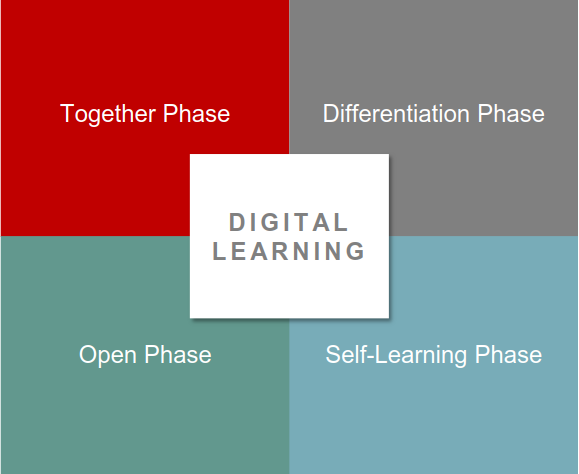
The 4 Learning Phases of Active Change Management
1) Together Phase
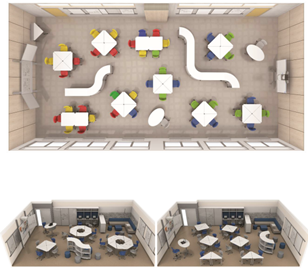
During the Together Phase, students learn to work efficiently and respectfully with others, while accepting each other as unique individuals and equals. This phase is the basis for successful integration of the whole concept and needs to be improved until everyone is on board. Lessons on eye-level for multiple-aged groups are implemented. The main responsibility is still with the teacher, but the students begin to work more independently. The classroom is prepared like a small society, which teaches a hidden curriculum — respect, hierarchy and organization. Students start to learn, from each other, and from the teacher.
2) Differentiation Phase
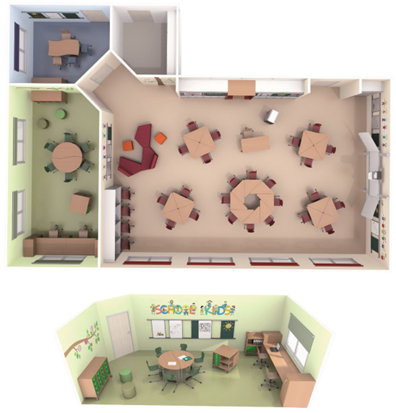
Differentiation is the key for a successfully implemented and changed concept so that students don’t lose the overview of the subject matter. Teaching is child-orientated instead of subject-orientated with students who need special assistance being supported as well as challenging those students who demand more advanced tasks. Differentiation is a concept formed out of didactic approaches, which call for the methodical organization of individual talents, abilities, inclinations, and interests of single students or groups of students within a school or class. Differentiation leads to individuation of the educational concept instead of direct frontal teaching.
Students are able to practice differentiated tasks, which introduce their individual strengths. This can take place in the classroom, or in separate rooms. In differentiated lessons, individual strengths and weaknesses are recognized and directly addresses. Optimal learning surrounding are an important key to success. The rooms should be structures clearly, equipped appropriately and offer enough space for learning materials.
Differentiation is most effective when the teacher adjusts the content, process and products to each student. To directly address a student’s learning profile, it is necessary to modify the learning environment. Differentiation of the learning environment depends on the student’s needs. Some students prefer quieter areas, while others need ample workspace. Some students prefer to work alone, while others do their best work in groups.
3) Open Phase
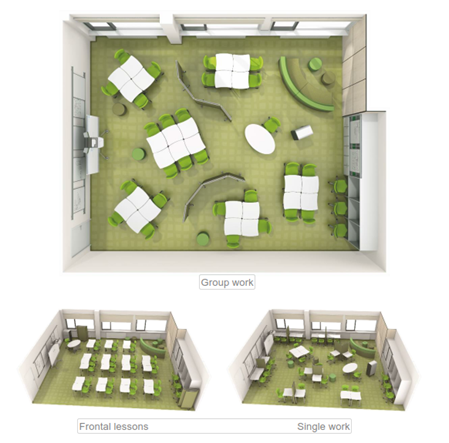
The Open phase still integrates concepts like multiple-aged groups, or lessons on eye level, but we begin to transfer the responsibility to the students and groups of students. Single, Partner, and teamwork are the cores of this phase. After the project work, more soft skills are taught, such as moderation and presentation (public speaking) skills.
The Open Phase emphasizes freedom as part of student independence and ownership with students learning to prioritize different subjects, time management and self-responsibility. To be able to accommodate for every child, the lessons include increasingly open learning forms. “Cooperative learning” is a 3-step system that contains the single, partner, and group approaches to work.
4) Self-learning Phase
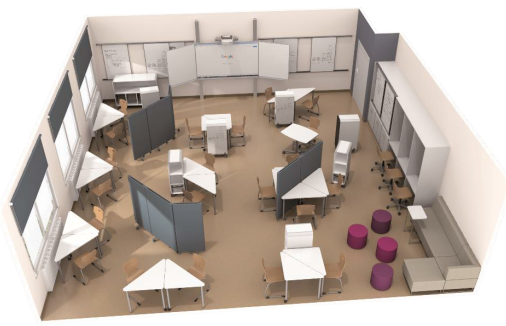
During the Self-learning phase, responsibility is solely on the student. That said, the student requires his or her own work zone/space, underlining the responsibility for the results of their work. Individualization in the classroom is key. Students should feel that they’re working on an individual level, on their own projects, all while using their own equipment. The classrooms are easily reorganized. With movable partitions, each student has ownership and use of multifunctional caddies (buddies) for their own material, and a sense of their own space. With that comes pride, and a heightened sense of respect for their place of learning. Classrooms begin to connect, and walls fall down and different coaches are checking the learn jobs and helping individually.
It´s not just about maximizing knowledge, it’s about critical thinking, and the process one uses to acquire and use knowledge for practical subjects. This concept, which is out of the reform educational theory, is called self-determined, or self-organized learning, and it denotes an approach where the students determine what, when, and where they learn, as well as how and with whom they’ll work.
With self-organized learning, each student is tasked with making the essential decisions for themselves. The economic, technical, cultural, and social changes of modern societies demand a new quality of knowledge. Knowledge must be connectable to new, unpredictable developments in society. Schools should teach and prepare students for life-long learning. Self-organized learning can help develop this quality of knowledge.
Everyone learns together and everyone learns something new. This is everyday life in today’s modern school. The children are evaluated on their respective achievements and are promoted individually.
Conclusion
Throughout each of the four phases, digital learning has a profound impact. For the most part, their use is project-connected. The more we adapt to self-organized learning, with the benefits of digital learning, the more we can help underline and support learning objectives, thereby enabling success.
Didactic teaching is still vital for core subjects like math, languages, and others, but teaching soft skills is crucial to helping train students to be prepared for the careers and requirements of the future. By implementing these four learning styles in phase form we can more easily understand how to modernize existing learning environments while gaining practical know about why this shift in methodology is beneficial.

